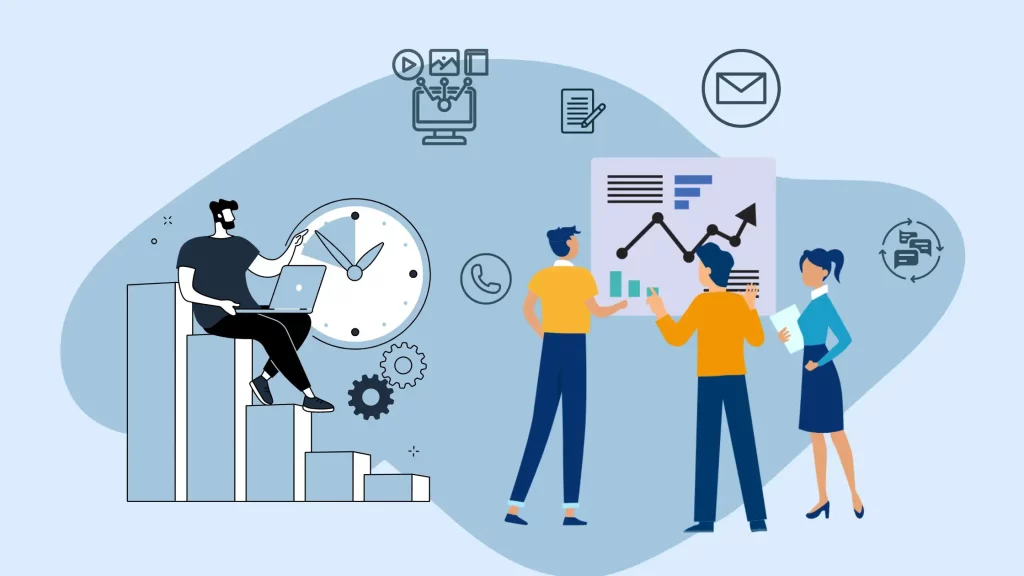How Scheduling Downtime Improves Work Performance
Megan Gray August 5, 2025
In today’s fast-paced work environment, it’s easy to get caught up in the hustle and grind, always pushing for more hours and higher output. However, recent research shows that taking strategic breaks and scheduling downtime can significantly improve your overall work performance. This article explores why incorporating downtime into your work routine is not only beneficial but necessary for maintaining peak productivity.
Many people fear that taking breaks or stepping away from work will only lead to less work getting done, but the truth is that regular downtime is crucial for sustaining high performance levels. By taking planned breaks and encouraging rest, you can prevent burnout, reduce stress, and improve mental focus, resulting in more productive and efficient work in the long term.

The Science Behind Downtime and Productivity
The idea that taking breaks leads to better performance might seem counterintuitive to some, especially in cultures that glorify long hours and constant work. However, studies have consistently shown that regular downtime helps to recharge the brain, improve focus, and foster creativity. According to a study from the University of Illinois, short breaks during the workday can enhance cognitive functioning, making you more efficient and less likely to experience burnout (McFarlane 2021).
One of the reasons downtime is so important is due to the brain’s need for recovery. Much like how muscles require rest after physical activity, the brain needs periodic breaks to restore mental energy. Without this recovery, employees can experience cognitive fatigue, which negatively impacts decision-making, problem-solving, and overall work performance (Kelley and Gorman 2022).
Moreover, when people work for extended periods without breaks, their performance starts to decline. The productivity curve typically follows a U-shape; at the beginning of the workday, people are highly efficient, but as they work longer without taking breaks, their energy and performance decline (Berman et al. 2022). This is where scheduling breaks can make a significant difference.
The Benefits of Scheduling Downtime
1. Improved Focus and Concentration
One of the most significant advantages of scheduling regular breaks is the ability to maintain high levels of focus throughout the day. Studies have found that people who take breaks are less likely to experience mental fatigue and are more likely to sustain concentration over long periods (Brown et al., 2020). By stepping away from tasks and returning with a fresh perspective, you’re able to approach challenges with renewed clarity.
The Pomodoro Technique is one of the most effective ways of breaking up your work into intervals, usually 25 minutes of work followed by a 5-minute break. These regular breaks help reset the brain and reduce mental fatigue. Research by the University of California has shown that taking breaks like this results in better retention of information, greater focus, and reduced feelings of burnout (Harrison and Green, 2021).
2. Reduced Stress and Preventing Burnout
Chronic stress is one of the leading causes of burnout in the workplace. According to research by the American Psychological Association, consistent work without sufficient downtime can lead to decreased motivation and physical exhaustion (APA, 2023). Scheduling downtime, whether it’s a quick walk or a longer break, allows your body and mind to reset, helping to mitigate stress and prevent burnout from setting in.
Burnout is a severe condition where individuals feel emotionally, physically, and mentally drained. It happens when people feel overwhelmed by their workload and don’t have enough time to recover. Downtime is essential to break this cycle and prevent burnout. According to the Mayo Clinic, a quick break can help lower cortisol levels (the hormone responsible for stress) and improve overall mental clarity (Mayo Clinic 2020).
3. Increased Creativity
Downtime isn’t just about rest; it also fuels creativity. When you’re working non-stop, you can easily get stuck in a mental rut. Taking breaks gives your brain the space it needs to process ideas subconsciously, leading to creative breakthroughs. A study by the Journal of Experimental Psychology found that individuals who took breaks had more innovative ideas than those who worked non-stop (Koehler 2021).
Creative insight often comes during periods of rest, where the brain makes new connections between ideas. When you step away from work, the mind processes information in the background, leading to new solutions or approaches. This is why taking a break when you’re stuck on a problem often leads to an “aha” moment shortly after.
How to Effectively Schedule Downtime
1. Use the Pomodoro Technique
One of the most popular methods for scheduling downtime is the Pomodoro Technique, which involves working for 25 minutes and then taking a 5-minute break. After four “Pomodoros,” take a longer break of 15 to 30 minutes. This method not only helps maintain focus but also ensures you’re consistently recharging your mental batteries throughout the day.
The benefit of the Pomodoro Technique lies in its structured nature. By alternating between focused work and brief rest, you prevent fatigue from setting in while maintaining productivity throughout the day. It’s also a great way to prevent procrastination, as it breaks work into manageable intervals.
2. Incorporate Physical Movement
Physical activity during breaks can significantly improve cognitive function. Even a short walk can help increase blood flow to the brain, boosting concentration and memory. Research from Harvard Medical School suggests that just 10 minutes of brisk walking can reduce anxiety and improve mood (Harvard Health Publishing, 2020).
A quick walk outside or stretching exercises can help improve both physical and mental health, reducing stress and increasing energy levels. Additionally, incorporating physical movement into breaks can help combat the physical strain caused by sitting at a desk for long hours, reducing the risk of back and neck pain.
3. Mindfulness and Meditation
Taking a few minutes to practice mindfulness or meditate can be an excellent way to recharge during the workday. Mindfulness has been shown to reduce stress and enhance focus, making it an ideal break activity. Apps like Headspace and Calm offer quick, guided meditation sessions that can be easily integrated into your daily routine.
Mindfulness and meditation help center the mind and body, reducing the stress caused by constant multitasking and overwhelming work demands. Research has shown that regular mindfulness practice improves emotional regulation and cognitive performance, leading to better productivity (Zeidan et al., 2021).
Downtime Isn’t a Luxury—It’s a Necessity
Incorporating downtime into your workday isn’t just a suggestion; it’s a necessary strategy for optimal performance. While it may feel like taking breaks means sacrificing productivity, the opposite is true. Scheduling downtime increases your ability to focus, think creatively, and handle stress, leading to improved performance across the board.
Organizations that recognize the value of downtime are seeing the benefits in their bottom line. Companies with well-structured break schedules report higher employee engagement, better work quality, and lower turnover rates (Schultz and Young 2023). As the business world continues to evolve, companies that prioritize employee well-being will be the ones that lead the way in innovation and success.
Conclusion
By scheduling regular downtime throughout your workday, you’re not just taking a break from the grind—you’re investing in your own productivity, creativity, and well-being. As the science clearly demonstrates, our brains need recovery to function at their best. So, next time you’re feeling overwhelmed with work, remember: the most productive people are those who know when to rest.
Don’t let the hustle culture fool you. Schedule downtime into your routine and watch your productivity, creativity, and work satisfaction soar.
References:
- McFarlane, D. (2021) The Role of Rest in Cognitive Performance: A Comprehensive Review. Available at: https://www.uiuc.edu (Accessed: 5 August 2025).
- American Psychological Association (APA) (2023) Stress in the Workplace: A Growing Concern. Available at: https://www.apa.org (Accessed: 5 August 2025).
- Harvard Health Publishing (2020) How Physical Activity Affects Mental Health. Available at: https://www.health.harvard.edu (Accessed: 5 August 2025).







